Antiseptic for a toilet in the country: a review of chemicals and bioactivators
Sooner or later, all owners of country houses are faced with the problem of processing wastewater, waste, feces. A properly selected antiseptic for a toilet in the country will help to solve this problem, eliminating harmful microorganisms and stench.
The article provides a detailed overview of different types of antiseptic agents, describes their application features, advantages and disadvantages. To facilitate the task of choosing the right drug, we listed the main criteria for a competent purchase, and also identified the best manufacturers of biological and chemical agents.
The content of the article:
The role of antiseptics in the sewage system
The accumulation of wastewater and faeces not only gives off an unpleasant odor, but can cause soil contamination with toxic substances or become a hotbed of harmful microorganisms.
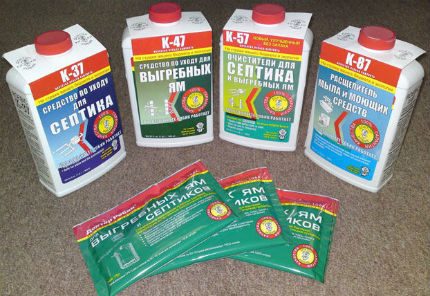
To get rid of them, various methods of disinfection and waste processing are used, which can be used in different types of sewer systems.
Tools for cesspools and septic tanks
For a long time, residents of small settlements used street closets equipped with drain pits, which require periodic pumping with the help of sewage machines. Antiseptics can significantly facilitate this process, reducing the frequency of waste collection.
Now homes are often equipped with local sewerage systems with septic tanks - special modules where waste collection and disposal takes place.
There are many septic tank options and houses that can be located both in the ground and on the ground. Usually they consist of several chambers, one of which is a sump, where sewage from the pipeline accumulates.
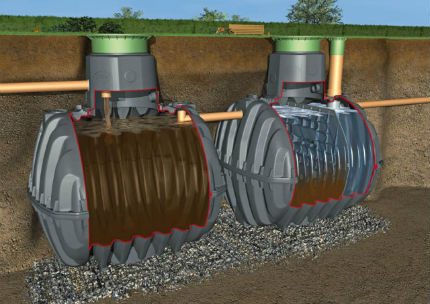
In the module compartments, primary filtration of the accumulated masses occurs. An antiseptic is added here through the drain hole, as a result of which decomposition of garbage occurs, from which only a mineral residue or sludge remains.
Types of antiseptics for a country toilet
All means for disinfecting and processing waste can be divided into two large categories:
- chemicals based on various components;
- bioactivators, the active agent of which are bacteria.
Antiseptics differ in their composition, mechanism of action, properties, scope.
The most effective, according to lovers of country life, the following drugs are recognized:
Fast and efficient: chemicals
Aggressive chemicals have long been used to disinfect and destroy the smell of sewage. Such preparations can destroy microbes, smooth the smell and partially thin the mass of feces, cellulose and other organic substances, which facilitates its pumping.
At the same time, most of the chemical compositions are not able to completely decompose the waste, the remains of which must be regularly removed from the summer cottage.
Varieties of household cleaning products
The classification of chemicals depends on the active substance, which determines the characteristics of the composition. The following drugs are most commonly found.
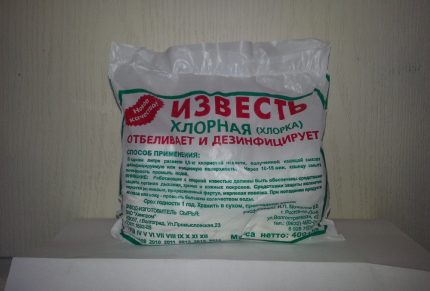
Bleaching powder. Affordable, cheap drug that has long been used to disinfect latrines. The composition effectively disinfects the tanks, preventing the spread of pathogenic bacteria. Although this substance is quite toxic, they continue to use it now, observing the appropriate precautions.
Formaldehyde. Despite the proven toxicity and carcinogenicity of such compounds, they are often used to clean toilets, because they combine low cost with high potency.
To avoid contamination of the soil and other negative consequences, you should carefully handle such drugs, observing all the attached instructions.
Ammonia. Compositions for cleaning drain pits, the main component of which is ammonium, are quick in action and highly effective.
However, there is a significant drawback: they are extremely sensitive to external environmental influences and react with other household chemicals. For example, with a solution of washing powder, which can get into the sewer after washing.
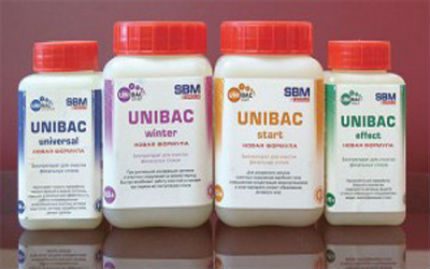
Nitrate drugs. Similar means for cleaning septic tanks, pits are considered the most environmentally friendly. The compositions contain surfactants that can thin the waste, drastically eliminating unpleasant odors.
Of all types of chemicals, nitrate preparations are most often used in septic tanks. In addition, the waste treated with certain preparations of this group can not be removed from the site, but used for irrigation of compost pits. There is only one drawback with nitrate formulations: high cost.
Advantages and disadvantages of chemicals
A variety of chemistry for drain pits and toilets in the country has strengths and weaknesses.
First, we list their positive qualities:
- Speed reaction. Sewerage cleaning begins immediately after the introduction of the drug, while waste processing using bacteria takes time to adapt microflora and multiply microorganisms.
- Operating temperature variability - cleaning agents can operate over a wide temperature range.
- Big choice. An extensive range of chemical compositions with various active elements is on the market.
- Action in any environment. The effectiveness of such antiseptics is practically independent of water quality, so they can be used regardless of the hardness index.
As we see such antiseptics have a lot of advantages, however, they have significant disadvantages, namely:
- Some drugs are highly toxic, which creates the risk of soil poisoning when hazardous substances get into it.
- A number of such agents aggressively affect the metal, so it is better not to use them in systems made of cast iron. Such equipment is best replaced with tanks and pipes made of polymers.
- Chemicals destroy both harmful and beneficial microflora. Colonies of pathogenic bacteria can settle on the freed space.
It is important to note that many negative factors can be avoided by observing safety measures and acting in strict accordance with the instructions.
Features of the use of chemicals
For the effective and safe use of chemical antiseptics, it is important to observe the following rules:
- All contents of the pits and compartments of the septic tank must be removed from the site (with the exception of effluents treated with nitrate compounds).
- It is necessary to regularly and thoroughly examine the contents of the septic tank, preventing their overflow and in a timely manner empty a cesspool. An increase in runoff can lead to toxin contamination of the upper soil.
- When handling cesspools, it is necessary to use special protective equipment: closed clothing that prevents the ingress of substances onto the skin, a mask (respirator), and tight rubber gloves.
- The recovery tank of the septic tank must be equipped with a ventilation hole for the output of the generated gases. In its absence, a spontaneous release can destroy the integrity of the structure, and the gases that penetrate the cracks will create an explosion hazard.
For the treatment of sewer systems, it is better to use tools from well-known manufacturers, which must be used in strict accordance with the instructions.
The choice of drug: what factors need to be considered
To decide on the purchase of chemical antiseptics, it is important to take into account factors such as the mode of use of the sewage system (permanent, seasonal, periodic) and the type of system used (cesspool, various septic tank models).
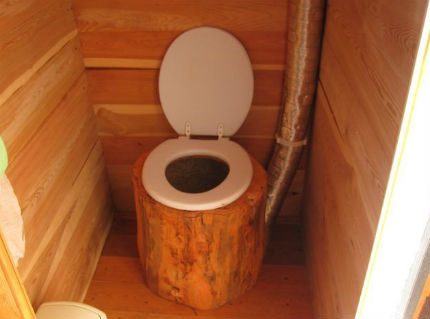
You need to know that cesspools without bottom, septic tanks with drainage of liquid into the soil are not suitable for compositions containing toxic substances, since there is a risk of harmful components entering the ground. Nitrate and ammonium compounds are better for this option, and bioactivators for septic tanks.
The best manufacturers of chemical antiseptics
In specialized stores a variety of chemicals from Russian and world manufacturers.
Among the most reputable firms can be noted:
- LLC Reakor - A major Russian supplier of all kinds of chemicals, including pit cleaning compounds, septic tanks.
- Chemoptovik - A company specializing in the production of industrial and household chemicals, including disinfectants, sewer cleansers.
- Septifos Vigor - a well-known French company supplying organic / inorganic chemical products for cleaning drain pits.
- Eco-Chem-East - A manufacturer of environmentally friendly chemistry, which is used for the treatment of sewage facilities.
- Roebic - An American laboratory company, a major supplier of household and industrial chemicals.
In addition to the listed companies, you can also find quality products from other manufacturers on sale.
Bioactivators: bacteria serve humans
A more modern method of cleaning sewers is bioactivators. In such preparations, colonies of specially grown microbes are hidden, which, falling into drains, provide decomposition and fermentation of organic substances, as well as displace pathogenic bacteria.
The composition of biological products for the garden
The biological agents used for country toilets have a rather complex composition.
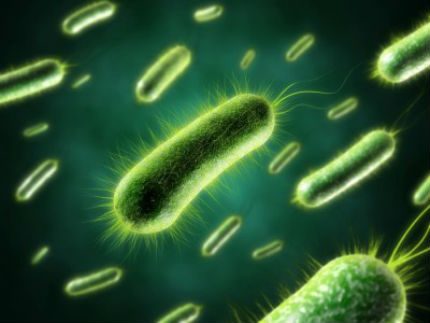
First of all, they may include various types of bacteria:
- Anaerobic bacteriathat feel great in the absence of oxygen. They are distinguished by high productivity, which allows them to be used both for cleaning the drains of cottages and country houses, as well as in local sewer systems of guest houses, campsites.
- Aerobic microbes. Since they can exist and multiply only in the presence of oxygen, the sewer system should be equipped with forced ventilation. With constant air injection, such bacteria do an excellent job cleaning pits / septic tanks, but in the event of technical malfunctions, their performance drops sharply.
As a rule, in modern biological products, several types of microflora are simultaneously used at once, which belong to both aerobic and anaerobic groups. This allows you to increase the effectiveness of funds, promotes uniform cleaning of the entire volume of the sewer system.
In this case, bacteria that need oxygen process waste on the surface, while anaerobic microorganisms corrode caked bottom masses.
In addition to bacteria, biological products for the toilet in the country include enzymes that accelerate the processes of fermentation and decomposition, as well as enzymes that enhance the effect of microflora on organics, and excipients.
Types of bioactivators for toilet and septic tank
Biological agents can be produced in various forms: in the form of a liquid, powder, capsules, tablets, granules.
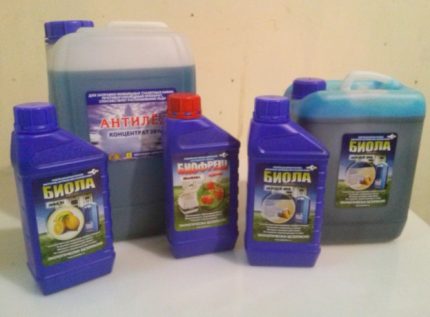
Liquid formulations. They are ready-made solutions containing a large number of bacteria. Such preparations do not require additional preparation, they can be used immediately by simply pouring liquid into a pit or a septic tank utilizer.
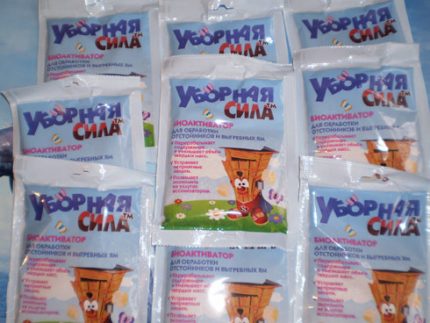
Dry preparations. Bioactivators can also be produced in the form of granules, powder, tablets, where the bacteria are in a "sleeping" state. Such products are compact, economical, easy to store and easy to process.
Before use, powders and granules should be dissolved in water (its amount and temperature, as well as the exposure time, are usually indicated in the attached instructions). After the bacteria awaken, the drug is poured into the sewer system, where the microflora begins to multiply immediately, conquering new spaces.
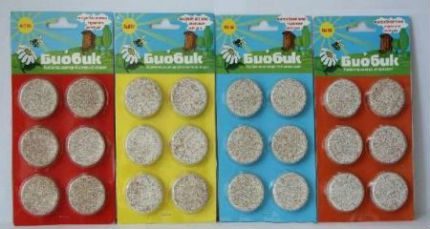
Bioactivators in the form of tablets include a maximum of a variety of components. They are most comfortable to use: just flush the disc into the toilet or throw it into the pit.
Tips for choosing biological agents
For biological products for cesspools and country toilets to work quickly and efficiently, you need to choose the right bioactivator.
It is necessary to take into account the features of their action:
- Liquid concentrates well suited for processing large volumes of effluents. They are quickly and evenly distributed in vast pits, bulky drains.
- Powders and granulesdiluted with water, it is advisable to apply for processing a small sewer system.
- Bioactivators in the form of tablets usually have a universal spectrum of action, as they have a complex composition.
When choosing it is important to pay attention to the recommendations that are given by manufacturers. Some drugs are universal, others are aimed at solving certain problems.
It is also important to find information on the duration of the action of microorganisms on the package: once they enter the nutrient medium, they begin to reproduce on their own, without requiring the addition of drugs.However, the development of bacteria can be slowed down due to frost or interruption in ventilation, which supplies oxygen to aerobic microbes.
Advantages and disadvantages of bioactivators
Among the strengths of bacterial antiseptics include:
- Safety for people and animals: funds are not toxic, do not cause allergies and irritation.
- No aggressive effect on pipes and tanks made of metal, concrete, polymers, which guarantees the correct and long operation of local sewage.
- Action efficiency. Almost complete destruction of the unpleasant smell of sewage: the microflora, which is part of such products, can almost completely displace putrefactive microorganisms responsible for the occurrence of stench.
- Reduced pumping frequency cesspools due to the complete processing of a certain proportion of fecal matter. When they decompose, water, gases, and also compost or sludge are obtained, which can be used as organic fertilizers.
- Elimination of pathogenic microfloraincluding pathogenic bacteria.
The environmental cleanliness and safety of such products will delight consumers, but biologics also have disadvantages.
Among them are:
- Exacting conditions. Possibility of use only at positive temperatures: already at +3 degrees, bacteria die, stopping waste processing. If the septic tank is not insulated, after the winter season you will have to think about updating the population of microorganisms.
- Chemical sensitivity: sewage with soapy solutions, alkalis, acids, aldehydes or other substances can slow down the decomposition process or even cause the death of microflora.
- The need for accurate calculation. Each bioactivator pack is designed for a specific volume of wastewater. In order to get a quick and long-term effect, it is important to strictly calculate the concentration of bacteria per unit volume, as well as strictly follow the instructions for the drug.
By carefully following the instructions, all these troubles can be avoided.
Rules for the use of bacterial agents
The active component of the bioactivator are living microorganisms, to ensure the vital activity of which it is important to observe a number of rules:
- It is necessary to observe the temperature regime, since microflora can exist at temperature limits from + 3 ° C to + 35 ° C. When using the sewage system in winter, it is necessary to think over the insulation system.
- Since most chemicals provoke the death of bacteria, it is important to exclude their entry into the drain hole.
- It is necessary to organize ventilation of the toilet, as well as monitor the level of fluid in the drain pit: it should be 20 cm above the accumulated solid sediment.
- The packaging of a biological product is designed for a certain amount of waste. If an insufficient number of microbes is introduced into the sewer, they will not cope with the task of processing waste and die.
- Long-term easy to use toilets can cause the death of bacteria, so this method is not too suitable for country houses with periodic visits by the owners. With a planned absence of more than 10 days, it is better to feed the microflora in advance by adding manure or other organic matter to the sewers.
It should also be remembered that modern bioactivators are designed for processing not only fecal matter, but also other organics: paper, fallen leaves, tissue.
The most popular bioactivators
On sale you can find a large assortment of modern bacterial preparations from Russian and foreign manufacturers. As an example, we name a few popular compositions.
Atmosbio - French powder product intended for decomposition of bottom sediments. The composition is an excellent compost activator, which can be used as a valuable fertilizer. The disadvantage is the short validity period (only 6 months).
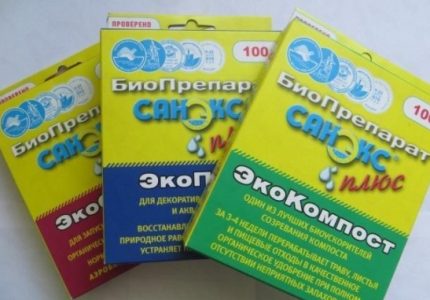
Saneks - A popular remedy from the Polish manufacturer. Orange powder has a wide spectrum of action. The product is suitable for cleaning surfaces, removing blockages in pipes, disinfecting, neutralizing odors, and cleaning toilets.
Green Pine - Belgian bioactivator from freeze-dried bacteria that can decompose feces and fats. The resulting precipitate can be used as fertilizer. An undoubted plus is the pleasant aroma of pine needles that fills the country toilet after processing.
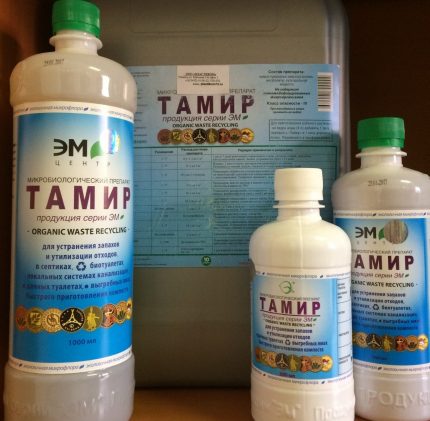
Tamir - An excellent domestic product containing more than 80 varieties of microflora, as well as enzymes that accelerate their action. The bioactivator perfectly copes with the most difficult tasks: thanks to it, in just two weeks, you can turn the contents of the drain pit into a useful compost.
Bio favorite - US-made liquid for cleaning toilets in country houses and cottages. The product drastically fights odors, guarantees effective safe care, breaks down feces, fats, paper.
Microenzyme CEPTI TRIT. The biological product of the Russian company RSE-trading was created on the basis of corn flour, supplemented with saprophytes and enzymes.
The product processes organics, compounds of phosphorus and nitrogen, which allows you to completely eliminate the stench. As a result of the action of this bioactivator, sludge is obtained from waste, which serves as an excellent fertilizer.
In addition to these funds, they are popular among summer residents bacteria “Dr. Robik”. In the product line there are preparations for starting a septic tank, cleaning cesspools and sewers.
Conclusions and useful video on the topic
Below we provide a video that allows you to get acquainted with modern antiseptics.:
Which antiseptic is worth choosing, in each case depends on a number of factors. It should take into account the mode of using the toilet in the country, the features of the sewer system, personal preferences.
Share with your readers your experience with the use of drugs for servicing suburban sewers, advise an effective antiseptic for a country toilet. Please leave comments on the article and ask your questions. The feedback block is located below.

 How to choose a tool for cleaning sewer pipes: a comparative overview of all types of tools
How to choose a tool for cleaning sewer pipes: a comparative overview of all types of tools  How to choose a dry closet for a summer residence: tips for choosing and an overview of the best models
How to choose a dry closet for a summer residence: tips for choosing and an overview of the best models 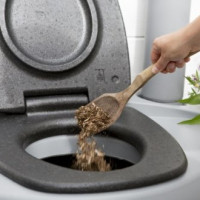 Peat Toilet Fillers: A Comparative Review and Selection Tips
Peat Toilet Fillers: A Comparative Review and Selection Tips  The smell of sewage in the toilet: an overview of the possible causes and solutions
The smell of sewage in the toilet: an overview of the possible causes and solutions 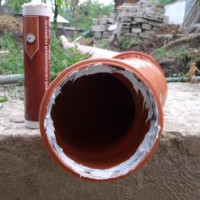 Sealant for sewer pipes: types, manufacturers overview, which are better and why
Sealant for sewer pipes: types, manufacturers overview, which are better and why 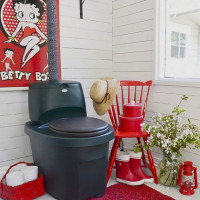 Which dry closet is better: liquid or composting? What to buy: peat or chemical option
Which dry closet is better: liquid or composting? What to buy: peat or chemical option  How much does it cost to connect gas to a private house: the price of organizing gas supply
How much does it cost to connect gas to a private house: the price of organizing gas supply  The best washing machines with dryer: model rating and customer tips
The best washing machines with dryer: model rating and customer tips  What is the color temperature of light and the nuances of choosing the temperature of the lamps to suit your needs
What is the color temperature of light and the nuances of choosing the temperature of the lamps to suit your needs  Replacement of a geyser in an apartment: replacement paperwork + basic norms and requirements
Replacement of a geyser in an apartment: replacement paperwork + basic norms and requirements
An antiseptic is an important component of the toilet on the street in the country. For example, we add an antiseptic to eliminate the smell and ease of pumping out the contents of the storage tank. And our neighbors do not, they have a terrible smell in the toilet. Such that it is impossible to be inside, and they often take out their contents and bury them in the ground. It is much easier to live with an antiseptic, we take it in the form of a powder.
The time when it was impossible to enter the cottage toilet because of the stench, and then had to air for half an hour to enter the house again and not to frighten the household with its “aroma”, has long passed. We use biological products.Yes, they do not begin to act immediately, but it is absolutely safe for the environment. Usually we take in liquid form, so it is most convenient.
Bioactivators will not work for me. We have severe winters and it is not possible to insulate the toilet to such an extent that it was -30 outside, but not lower than +3. Interested in whether chemistry-based antiseptics will work in the winter?
In general, I immediately express my admiration for your courage to go to the toilet on the street at a temperature of -30 * C 🙂
I can offer several several options for solving your question:
1. Make a deeper hole, much lower than the freezing area, so that the temperature in the cesspool does not fall in winter time below + 3 * C, at which bacteria die;
2. As an alternative - this is a peat toilet. I am enclosing a scheme for implementing such a project.
In any case, you just need to insulate the toilet, it can be done quickly and inexpensively using foam plates, for example.